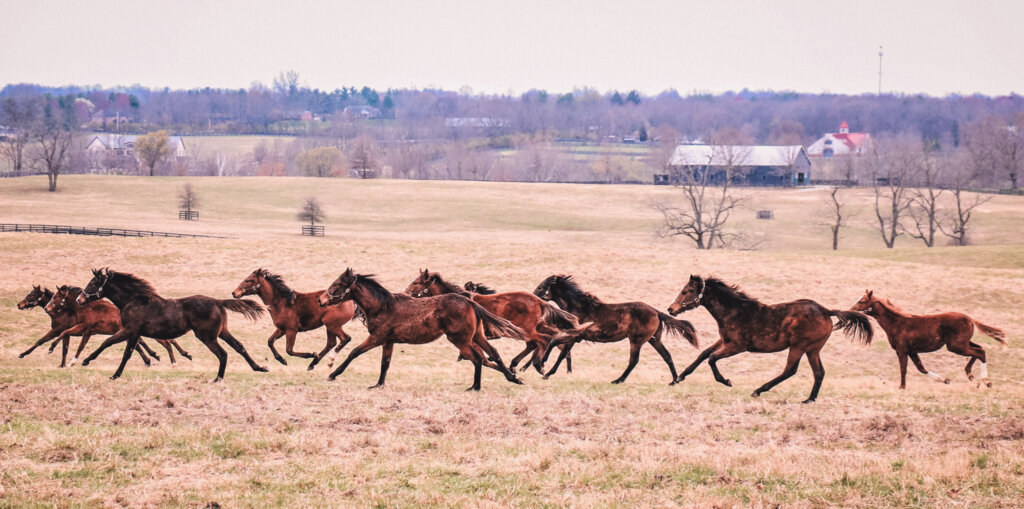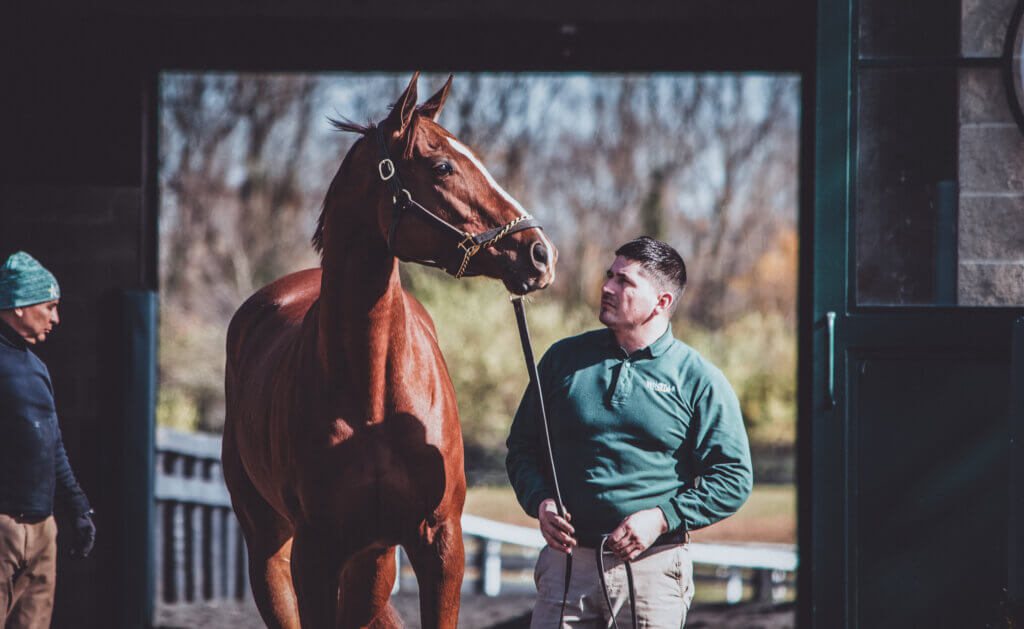In the wild, horses cover significant distances every day. While moving between their grazing pastures and water sources, wild horses can cover as many as 20 to 50 miles every day with slow, steady exercise punctuated with short bursts of more vigorous activity. This extensive travel is part of their natural behaviour, helping them find food, water, and avoid predators.
Flight animals
Horses are prey animals, so they take flight as a means of protection; this is how they avoid being eaten in the wild.
Galloping is a natural gait for horses, developed evolutionarily through their need to flee from predators and they can gallop fast. They have long slender limbs, attached to large muscular bodies, giving them great power and, as athletes, they outperform other animals of similar body size. The natural inclination to move and run would have been crucial to horses’ survival in the wild.
“In natural, social contexts, horses do seem to “race” each other. Running and jumping in what appears to be playful racing is a prominent aspect of play among juveniles..."
Sue McDonnell
Herd animals
Horses are also herd animals – they enjoy running in a group, similar to a race field. Sue M. McDonnell, PhD, a certified applied animal behaviorist and the founding head of the equine behavior program at the University of Pennsylvania’s School of Veterinary Medicine, writes:
“In natural social contexts, horses do seem to “race” each other. Running and jumping in what appears to be playful racing, which is a prominent aspect of play among juveniles, especially colts.
“Among adults, running occurs in a couple of contexts. Both males and females run to escape threats. Adult males also run when chasing or being chased by another male. In those natural social contexts, the behavior seems to indicate that at some level, they have “won” or “lost”.
Born to run
Within an hour of birth, foals can stand, and within a week, they can cover five miles, much of it at a canter. This rapid growth and physical activity, which is around 98% complete by two years of age, is an evolutionary adaptation that also equips horses to evade predators.
Leading veterinarians believe that this behavior serves as natural conditioning, “priming all the muscles, tendons, and cartilage into a variation of load.” Dr. Chris Rogers argues that this early variation in load is crucial for young horses to develop a tolerance to the loads they would experience while racing.

Rogers continues:
“It’s so different from a human baby, and I think that’s one of the big problems we have with people from outside the industry looking at 2-year-old racing. They all look at it and say, ‘Oh, 2-year-olds, they must be babies.’ But when you look at it, that animal has been moving around, covering significant distances since it was a couple of days old.”
Similar to humans, racing and training can be demanding for horses, but due to the individual care and attention they receive, the stress induced by racing is comparable to what human athletes endure.
“Within an hour of birth, foals can stand, and within a week, they can cover five miles, much of it at a canter.”
Chris Rogers
Intelligent and Sociable Animals
Horses are intelligent animals and also sociable, meaning they can thrive in various environments, including those provided by humans.
In many ways, it’s a life of luxury; personal grooming, expertly managed diets, physiotherapy, and swimming sessions. It costs between $30,000 – $70,000 per year to keep a horse in full training, depending on the location, with daily access to a vet, annual dentist visits, and a new set of shoes every four to six weeks.
Also, a horse typically weighs around 1100 lbs, significantly more than a human, let alone a jockey. So when it comes to persuading a horse to do something, if they’re truly unwilling, there’s little a human can do. These magnificent creatures, while brilliant, can also be quite stubborn, serving as undeniable proof that they won’t be coerced into running against their will.
sources
Evans, P. (2010). Equine Behavior: Prey vs. Predator, Horse vs. Human. [online] Available at: https://digitalcommons.usu.edu/cgi/viewcontent.cgi?article=1124&context=extension_curall
Williams, C.A. (2004) The Basics of Equine Behavior. [online] Available at: https://esc.rutgers.edu/fact_sheet/the-basics-of-equine-behavior/
Williams, D. (2020) Is it ethical to continue to race horses? Veterinary Record, 187(1), pp.38-38.
Hampson, B., De Laat, M., Mills, P. and Pollitt, C. (2010) Distances travelled by feral horses in ‘outback’ Australia. Equine Veterinary Journal, 42, pp.582-586.
British Horseracaing Authority (2018) Do horses enjoy racing? [online] The British Horseracing Authority. Available at: https://www.britishhorseracing.com/faqs/horses-enjoy-racing/
Krueger, K. (2008) Social Ecology of Horses. Ecology of Social Evolution, pp.195-206.
Hinchcliff, K. and Geor, R. (2008) The horse as an athlete: a physiological overview. Equine Exercise Physiology, pp.2-11.
McDonnell, S. (2019) Does a Racehorse Know if He Wins or Loses? [online] The Horse. Available at: https://thehorse.com/113465/does-a-racehorse-know-if-he-wins-or-loses/
Watts, K. (2022) Maturing Chautauqua relishing new role. [online] Racing.com. Available at: https://www.racing.com/news/2022-02-03/news-review-chatauqua-relishing-new-role



